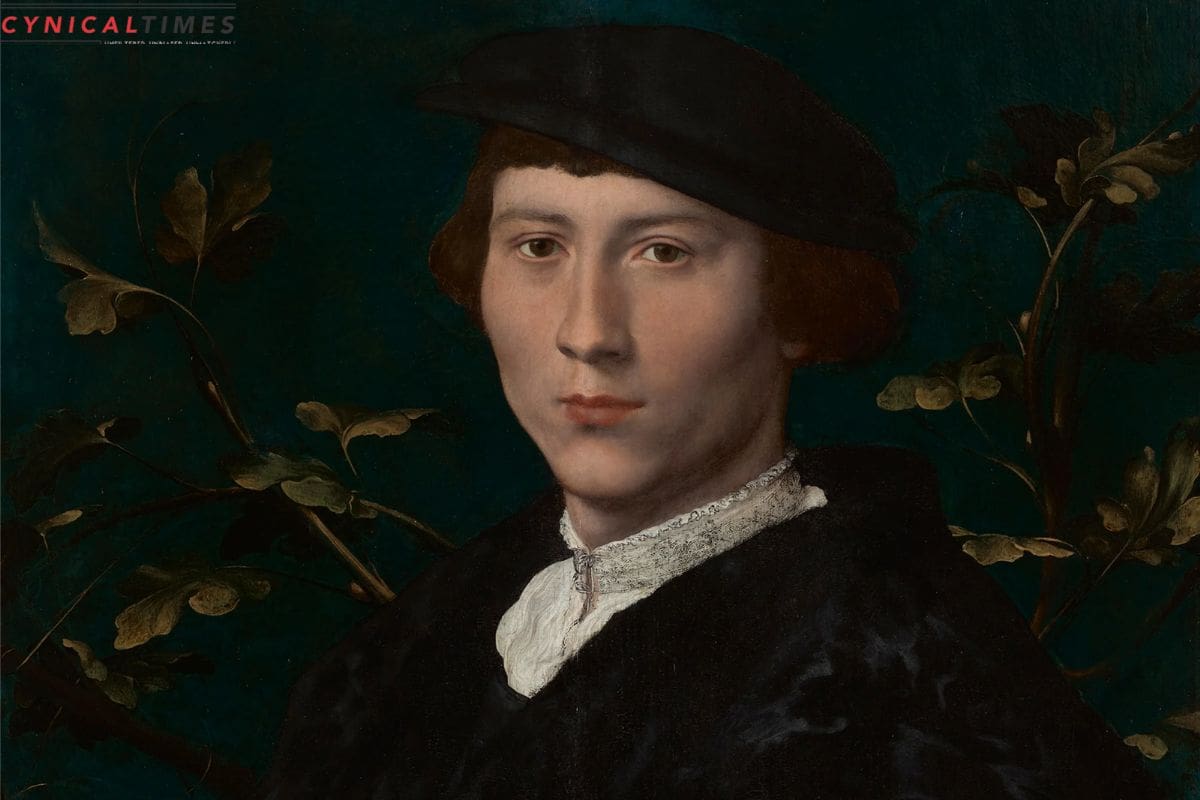Holbein Artistry Unveiled: In the vibrant tapestry of art history, a hidden gem has emerged from the brushstrokes of Hans Holbein the Younger. The 1533 portrait of Derich Born, a German merchant in London’s Hanseatic League, has undergone a metamorphosis through meticulous conservation at the J. Paul Getty Museum. The portrait, once owned by Charles I and later reclaimed by Charles II, reveals Holbein’s artistry in shaping Born’s features with each stroke.
As Born’s cheekbones acquired sharper definition, the painting became a testament to Holbein’s skill. The inscription on the parapet beneath Born’s arm, likely crafted by Holbein, praises the lifelike representation, challenging viewers to discern between painter and subject. This masterful work, recently conserved in Los Angeles, now takes center stage at the Queen’s Gallery in Buckingham Palace, offering a glimpse into Holbein’s ascendancy as the Tudor court’s favored artist.


Derich Born, a young and confident figure at 23, commissioned his portrait, projecting an air of arrogance that would later lead to his expulsion from England in 1541. Despite his non-royal status, Born’s portrait stands among several commissioned by influential traders from the Hanseatic League. Holbein’s artistry transcends mere representation; it captures the essence of his subjects.
The conservation efforts, led by Nicola Christie of the Royal Collection, aimed to address the painting’s condition. Concerns arose when the Getty Museum requested a loan for its 2021-2022 Holbein exhibition. Despite the challenges posed by the global pandemic, Christie collaborated with the Getty Museum’s laboratories and scientists to enhance the portrait’s preservation.
The portrait, composed on Baltic oak planks, presented challenges in its conservation. A visible seam, running vertically through Born’s face, revealed historical interventions that required delicate attention. Christie’s expertise and microscopic work unveiled the original surface, showcasing Holbein’s nuanced treatment of textures and fabrics.


Also Read: Space Love Chronicles: Conceiving Life Beyond Earth’s Gravitational Embrace
The restoration journey involved X-ray fluorescence spectroscopy and gas-chromatography-mass spectrometry, unraveling the layers of pigments used by Holbein. From the gray ground to the opulent black shades of Born’s attire, the analysis exposed the artist’s meticulous craftsmanship. X-rays disclosed subtle adjustments, enhancing Born’s facial features, shoulder, and hat.
The portrait, displayed alongside 40 of Holbein’s exquisite drawings from the Royal Collection, provides a holistic view of the artist’s brilliance. Among the drawings are studies of historical figures like Henry VIII, Mary I, Edward VI, Anne Boleyn, and Jane Seymour. The exhibition not only unveils Holbein’s technical mastery but also offers a window into the intriguing life of Derich Born, a figure whose history fades after trading towels in Antwerp in 1549.
In the grandeur of Buckingham Palace’s Queen’s Gallery, Holbein’s artistry beckons viewers to appreciate the subtle evolution of Derich Born’s portrait—a timeless testament to the enduring allure of Renaissance portraiture.

